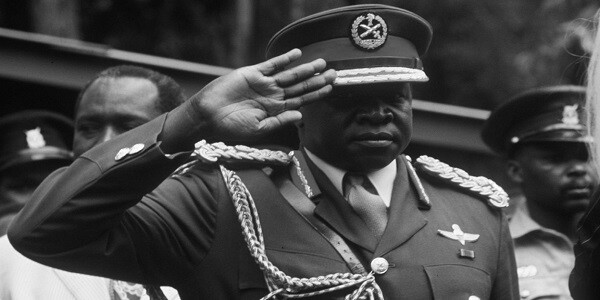Photo credits: Allstar Picture Library Ltd /Alamy
Uganda’s infamous ex-president, General Idi Amin (pictured) led a coup d’etat in 1971, which was carried out by the African nation’s former military.
General Amin deposed President Milton Obote’s government in Uganda on January 25, 1971. President Obote was deposed forcibly while visiting the Southeast Asian nation of Singapore —- as he attended an international summit called the Commonwealth Heads of Government Meeting.
Amin moved forcibly against the national government because he feared that Obote would unseat him as a military commander. Amin assumed the Ugandan presidency following the success of his coup d’etat.
In the 1971 coup, Uganda’s Army acted against a progressive-leaning socialist regime whose domestic politics greatly threatened the military’s economic liberties. The coup is frequently cited by African historians as a forceful junta that exercised a military class action.
Amin maintained an iron grip on Uganda until 1979. In April of that year, Tanzanian President Julius Nyerere’s army forced him to flee the country. In 1978, Uganda’s ex-military dictator attempted to conquer Tanzania’s Kagera Region. In retaliation, Tanzanian President Nyerere directed the Tanzanian army to exert military pressure on the administration of Ugandan President Idi Amin.
Uganda’s former authoritarian leader went into exile following his defeat as a result of the military conflict with Tanzania. Initially, he was granted asylum in Libya. When Libya was no longer a comfortable place for Amin to lay low, he fled to Iraq, another country in the Muslim world.
His final stop after years in exile was Saudi Arabia, which was where Amin lived until his death on August 16, 2003.





















No comments